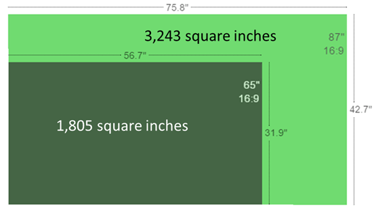
You’ve examined all the requirements: room size, HD vs UHD, the size of the interactive area you need for the number of students you want to have working together, and the display with the best classroom software. Then you come to the final factor: budget! Budget is often not a small factor, especially when you need to outfit 10, 20, or even 100 classrooms. Sometimes the answer to your display requirements and needs is an interactive projector.
This may seem counterintuitive – could the latest HD touch-enabled display solution really be a projector? Depending on which factors are the most important to you, the answer may be yes. Projectors can do much more than just project an image on a whiteboard or screen. Today’s projectors offer many of the latest technology features you find in interactive flat panel displays.
Key Benefits of Interactive Projectors
Hign Resolution Quality Image - Projectors are able to create beautiful, bright, clear images that can rival many displays. Most projectors offer high resolution images, and a few models offer HD. The real difference is in size and clarity. An average display in a classroom would need to be larger than 70 inches in order to be seen by most students and have text be readable, but that is also where their price begins to rise. A projector, on the other hand, can create high resolution images up to 104 inches for a much more affordable alternative.
Touch-Enabled Interactivity - Today’s projectors are available as finger or stylus controlled. In addition, they can have up to 10 students working together at the front of the classroom, giving you the same opportunities for collaborative and whole-class learning.
Large-Scale Collaborative Areas - This is where projectors offer a unique value. They can create an interactive area as large as 140 inches. Most displays allow 6-10 students to work together, but if the area is small that isn’t realistic. As mentioned before, if a display is 70 inches or under, it can be very difficult for students to see or read what is being displayed. Too small to see and too hard to read means the display ends up not being used. Projectors allow for large-scale collaborative areas where students and teachers can actually work together. If this is the type of learning that you favor in your classrooms, then a projector might be a good alternative to a flat panel display.
For example, a 65 inch image just doesn’t provide a lot of space – just 1,805 square inches. A typical classroom whiteboard and projected image combination is 78 inches, which has 2,600 square inches – 44% more than the 65 inch display. And an 87” whiteboard and projected image combination delivers 3,243 square inches of space, 80% more than a 65” display! This site allows you to plug in various display sizes and compare square inches of displayed image. For our example, we entered the size of a comparable projector and whiteboard combination.

Laser Options for Bulb-Free Maintenance - A downside to projectors in the past has been the bulb changes and maintenance. Now many interactive projector companies offer replacement bulb programs or laser models. With typical school use, a laser projector will never need to have its bulb changed. While laser models are more expensive then bulb projectors, they are still more affordable than comparably-sized displays.
Disadvantages of Projectors
Flat Surface Issues - For touch-enabled projectors to work at their optimal level, they need a flat surface. A touch projector operates using a laser emitter. To create a laser “curtain” over the entire surface of the whiteboard, the laser emitter must be precisely aligned onto a “laser-flat” whiteboard. Improper alignment or a whiteboard that is not flat will significantly degrade the performance of the touch tracking system.
Installation Can Be More Involved - Displays are simple. Many people find display installation easier and less of a hassle than projector installation. Mount a display, connect it to the teacher’s computer, and plug it in. Projectors have close to the same number of steps, but calculating the distance from the whiteboard and running wires through the ceiling or wall can often be more challenging. Most interactive projector companies offer distance calculators to make this easier.
Ambient Light - LCD screens are brighter and emit their own light; they therefore do not have issues with the ambient light in the classroom. With a display, teaching in a darkened room isn’t something you have to worry about. If your school has classrooms with lots of natural light and limited shades, then displays may be the better option.
Sound System - Most displays come with a built-in sound system. Depending on the size of your classroom this may be sufficient. Many projectors do not include a sound system, though they do have audio output. If the amount you spend on the projector solution is less than what you would spend on a display, adding a sound system may still make sense for your budget.
To find the right projector or display solution, examine how you will use the solution the majority of the time and weigh that against key factors: size, collaboration options, environment, and budget. The right solution is the one that works for your schools, educators, and students.
Check out our complete guide on flat panel interactive displays! Read Now.>>



